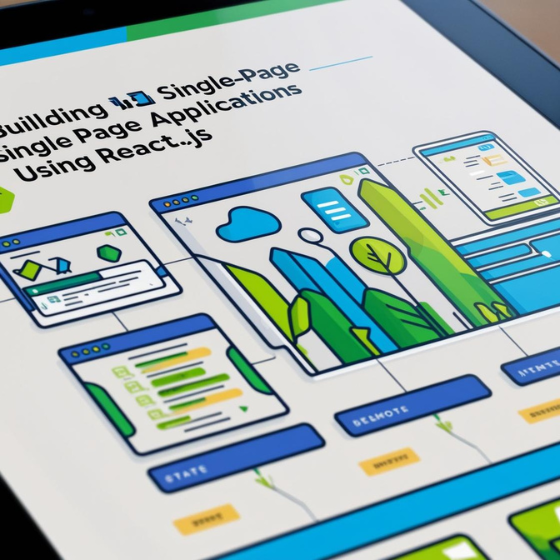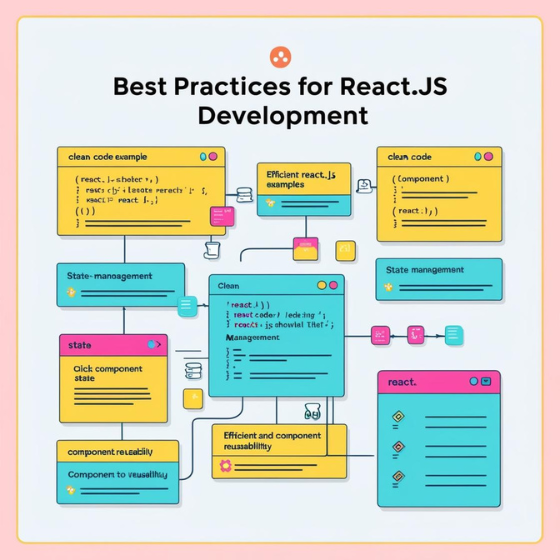The Role of Redux in React.js Development
In today’s fast-paced digital landscape, building scalable and efficient web applications is more critical than ever. React.js has emerged as a powerful tool for creating dynamic user interfaces, but managing the growing complexity of state within applications often becomes a challenge. That’s where Redux comes into play.
Redux, a popular state management library, complements React.js by simplifying and centralizing state management, ensuring a seamless user experience. In this blog, we’ll delve into the role of Redux in React.js development, exploring its advantages, practical use cases, and why it has become a go-to solution for developers.
Introduction: Why Redux Matters in React.js
Managing state in React.js applications can become cumbersome as the app grows in complexity. Components may need to share data, leading to prop drilling or spaghetti-like state structures. Redux resolves these issues by providing a single source of truth for state management.
Redux allows developers to maintain predictable state transitions, making debugging and testing easier. If you’re wondering about the role of Redux in React.js development, this blog will answer your questions and provide actionable insights to enhance your development workflow.
What is Redux?
At its core, Redux is a state management library that follows three fundamental principles:
- Single Source of Truth
Redux stores the application state in a single JavaScript object, ensuring consistency across components. - State is Read-Only
The state can only be modified by dispatching actions, maintaining immutability. - Changes are Made with Pure Functions
Reducers, pure functions, handle state updates in response to dispatched actions.
By adhering to these principles, Redux enables developers to build applications that are easy to maintain, debug, and scale.
Why Use Redux in React.js Development?
1. Centralized State Management
- Redux provides a single store for all application states, avoiding the need for prop drilling.
- This centralized approach is particularly beneficial for large-scale applications with complex data flows.
2. Predictable State Transitions
- The unidirectional data flow ensures that changes to the state are predictable and traceable.
- Debugging tools like Redux DevTools allow developers to inspect state changes in real time.
3. Improved Maintainability
- Redux encourages a clear separation of concerns, making codebases easier to manage.
- Actions, reducers, and middleware can be organized systematically for better scalability.
4. Enhanced Collaboration
- Developers working in teams benefit from Redux’s structured approach, ensuring everyone understands how state is managed.
5. Middleware Capabilities
- Redux middleware like
redux-thunkorredux-sagaextends functionality, enabling asynchronous operations and side-effect management.
By integrating Redux, developers can overcome many challenges associated with state management in React.js applications.
Real-World Applications of Redux
1. E-Commerce Platforms
- Managing cart states, user authentication, and inventory data in a consistent manner is crucial.
- Redux ensures smooth and predictable state transitions for a seamless shopping experience.
2. Social Media Applications
- Features like notifications, user posts, and messaging rely on synchronized states across components.
- Redux provides the infrastructure to manage these interactions effectively.
3. Dashboard and Analytics Tools
- Dashboards often involve real-time data visualization and complex user interactions.
- Redux simplifies state management, ensuring data consistency across components.
4. Healthcare Applications
- Managing patient records, appointment schedules, and real-time updates requires centralized state handling.
- Redux helps ensure reliable and secure state transitions.
How to Get Started with Redux in React.js
1. Setting Up Redux
- Install Redux and React-Redux
2. Create a Redux Store
- Define your application’s state structure and configure the store.
3. Write Reducers and Actions
- Reducers handle how state changes in response to actions.
- Actions define the intent to change the state.
4. Connect React Components
- Use the
Providercomponent to make the Redux store available throughout the application. - Connect components using
useSelectoranduseDispatchhooks.
5. Use Middleware for Async Operations
- Middleware like
redux-thunkorredux-sagaenables handling of side effects, such as API calls.
By following these steps, you can integrate Redux into your React.js project and streamline state management.
Case Studies: The Role of Redux in Sodio’s React.js Projects
1. Building a Scalable CRM Platform
- Challenge: Managing complex user data and interactions.
- Solution: Implemented Redux for centralized state management and used
redux-thunkfor API integration. - Result: Achieved a 30% reduction in development time and improved application performance.
2. Developing a FinTech Application
- Challenge: Real-time updates for financial transactions and user portfolios.
- Solution: Leveraged Redux with middleware for efficient handling of asynchronous operations.
- Result: Delivered a highly responsive and scalable solution.
Discover more about our projects on Sodio’s case studies page.
Best Practices for Using Redux in React.js Development
- Keep Reducers Simple: Focus on managing a single responsibility per reducer.
- Normalize State: Avoid nested data structures for better performance.
- Use Redux Toolkit: Simplify Redux setup and boilerplate with Redux Toolkit.
- Enable DevTools: Use Redux DevTools for debugging and analyzing state changes.
- Avoid Overuse: Evaluate whether Redux is necessary for your project before implementation.
Conclusion: Why Redux is a Game-Changer for React.js Development
The role of Redux in React.js development cannot be overstated. By addressing the challenges of state management, Redux empowers developers to build robust, scalable, and maintainable applications.
At Sodio, we specialize in leveraging React.js and Redux to deliver cutting-edge solutions tailored to your business needs. Whether you’re building a dynamic e-commerce platform, a real-time analytics dashboard, or a complex web application, our team has the expertise to make your vision a reality.
? Contact us today to learn how Redux can transform your application development process.
? Explore our React.js development services for more insights and solutions.







